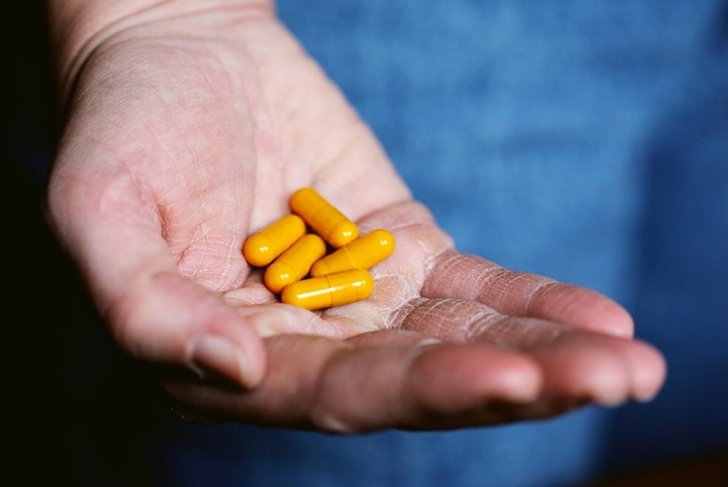
No one has time for pain. Television commercials tell you to suppress your aches with a pill so you can get on with your busy life. But this quick-fix mentality could harm rather than help you.
Ibuprofen, aspirin, and similar over-the-counter painkillers carry the risk of serious side effects like stomach and kidney damage. Some prescription painkillers—like the opioid drugs oxycodone and hydrocodone—can lead to dangerous addictions.
Though not as quick and simple as popping a pill, numerous holistic modalities can ease pain naturally and, in some cases, even address your pain’s underlying causes. As we continue to reel from the opioid crisis, these natural therapies may be just what the doctor ordered.
Lessons from a crisis
Overdoses involving prescription opioids have claimed the lives of more than 246,000 Americans in the past 20 years. The ongoing opioid epidemic in North America was partly fueled by a 20-year campaign by drug companies incorrectly claiming that slow-release opioids could be prescribed without worry of addiction.
The truth is that these drugs can produce a “high” that can hijack the brain’s reward system and trigger dependence. 21 to 29 percent of patients prescribed opioids for chronic pain misuse the drugs, and 8 to 12 percent get hooked, setting the stage for possible overdoses.
To help curb opioid abuse, guidelines for treating pain in the United States and Canada were revised about five years ago. Providers are advised to first recommend non-drug pain treatments, such as physical therapy.
But opioid prescriptions remain a go-to for many pain issues. For example, in North America, 80 to 95 percent of people receive an opioid prescription to manage postsurgical pain at home.
That means you’ve got to stay on your toes when discussing pain care options with your doctor. Many people expect health care providers to “fix” their pain. Instead, think of doctors as guides in the journey to find the root causes of your pain and potential solutions.
Explore holistic options
Ready to take an active role in conquering pain naturally? Here are some choices to consider.
Acupuncture and acupressure
Acupuncture is one of the world’s oldest pain treatments. It involves applying extremely thin needles to specific meridian points on the body. “This helps move chi [energy] and blood in the area to promote pain relief,” says Kim Peirano, DACM, LAc, owner of Lions Heart Wellness in San Rafael, California.
Research shows that acupuncture can help chronic or recurring pain, such as migraines and arthritis. “One study found that acupuncture was more effective than morphine for relieving acute emergency pain,” says Peirano.
If needles aren’t your thing, try acupressure, which can also relieve a variety of painful conditions. “It uses the same meridian points as acupuncture,” says Brittany Ferri, PhD, OTR/L, founder of Simplicity of Health in Rochester, New York. “But, you can self-administer acupressure and use it anywhere.”
Chiropractic care
While opioids are commonly prescribed for back pain, chiropractic care is an effective alternative for treating back pain, as well as neck pain and some headaches.
In one study, when people with back pain received chiropractic care, they were <half> as likely to use opioid painkillers over the following six years, compared to non-chiropractic patients.
“A chiropractic adjustment helps return movement to the body,” says Andrew Kerklaan, DC, in Montreal, Quebec. “In the process, it stimulates your proprioceptive system, which is the part of your brain that supports movement. This results in a reduction in muscle tension, inflammation, and pain.”
Naturopathy and functional medicine
Naturopaths and other functional medicine practitioners use many non-drug therapies to holistically address the root cause of pain and promote self-healing processes.
“Anytime you’re dealing with chronic pain, you have to look for the inflammatory instigators,” says Carley Squires, ND, owner of Northwest Restorative Medicine in Seattle, Washington. “For example, inflammation could be triggered by the standard American diet, environmental toxins, or chronic stress.”
Studies suggest whole-food diets, including vegan diets, can help reduce chronic pain. Curcumin and omega-3 supplements also help reduce inflammation and pain naturally.
Occupational and physical therapy
Occupational and physical therapists with holistic perspectives can help you find lifestyle solutions to decrease pain.
“An occupational therapist can teach you how to modify daily activities [like] to help you function without aggravating pain and help conserve your energy,” says Ferri.
Similarly, a physical therapist can show you how to move your body in ways that minimize pain and teach you exercises to help you return to normal function.
“Look for a physical therapist who does a thorough exam to figure out what’s really going on,” says Kellie Soltis, PT, DPT, at Potomac Physical Therapy and Rehab in Gaithersburg, Maryland. “They should look at your whole movement pattern, not just the body part where you have pain.”
Trigger point dry needling is another technique to consider for musculoskeletal pain. “We put a thin needle in tight spots in your muscle and move the needle around a little to get the muscle to quickly contract then relax,” explains Soltis, who is a certified dry needling therapist. “That helps loosen up the muscle and relieve pain.”
Regenerative injections
Two common regenerative injection therapies for musculoskeletal pain are prolotherapy and platelet-rich plasma (PRP) therapy. These stimulate healing of damaged tissues, such as ligaments and tendons.
“Regenerative injection therapies are pretty non-invasive, but they can result in increased pain for a week or two as your body heals,” says Squires. In the long run, they reduce pain and promote tissue health.
Mind-body approaches
Ferri teaches methods to take the mind off pain, such as gratitude practices and mindfulness meditation. Meditation can be as simple as closing your eyes and focusing on deep breathing for 10 minutes.
Research has shown mindfulness meditation can help reduce your perception of pain and increase your pain threshold.
Set the right expectations
When you talk to your health care provider about which of these modalities might be right for you, be realistic about what it might take to address your pain without pills. Don’t expect chronic pain to be fixed overnight. You may have to try more than one strategy to get the relief you want.
“Different modalities can be synergistic,” says Peirano. “For example, a combination of chiropractic care, physical therapy, and acupuncture may be more effective than just one of these approaches.”
Sure, it takes a little extra effort to pursue natural approaches to pain relief—but avoiding pain pills may spare you a lot of agony down the road.
CBD, pain, and opioid abuse
Cannabidiol (CBD) is garnering attention for its potential to help axe your aches. Preliminary human studies suggest oral or topical CBD could help with chronic pain, such as due to fibromyalgia or arthritis.
“Your body makes molecules that are nearly identical to CBD,” says Kerklaan. “By interacting with the endocannabinoid system, which is distributed throughout your body, CBD helps regulate pain and inflammation.”
CBD comes from hemp, a cousin of the marijuana plant that has only trace amounts of tetrahydrocannabinol (THC). That means it won’t get you high, and it’s non-addictive.
In fact, CBD even shows promise for battling opioid addiction. A small study found that CBD taken orally could help suppress heroin cravings in people with a history of heroin abuse who were abstaining from the illegal opioid. Though encouraging, more research is needed on CBD’s effectiveness for treating substance use disorders.
Prudent use of painkillers
If you do decide to take a pain medication, there a few things to keep in mind to protect your overall wellbeing.
First off, don’t think of it as a long-term solution. “Sometimes people need medication to tolerate the recommended physical therapy,” says Soltis. “But as you make progress, stay in touch with your doctor about weaning off the medication.”
Before taking an opioid, discuss the risks with your health care provider. Be open about past substance abuse problems, which could increase your risk of opioid addiction.
Ferri advises being alert to potential signs of addiction to painkillers, including:
- Hiding how much pain medicine you’re really using
- Taking pain medicine preventively, before you have pain
- Large swings in your mood or energy
“Addiction isn’t something to be ashamed of,” says Soltis. “It just means you need to get help from a mental health professional.”













